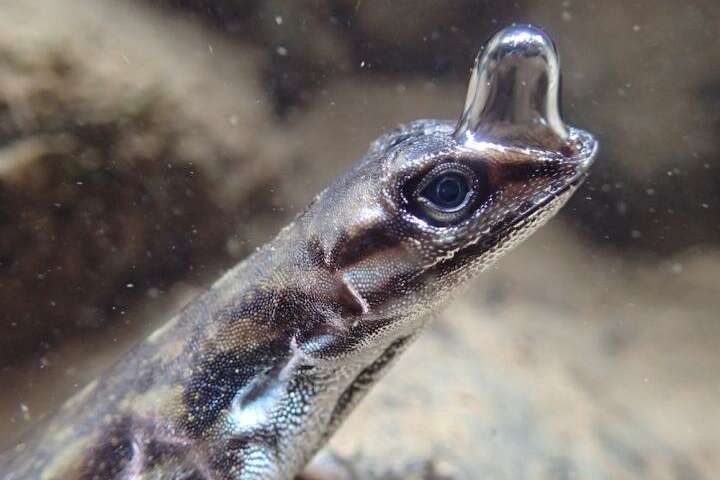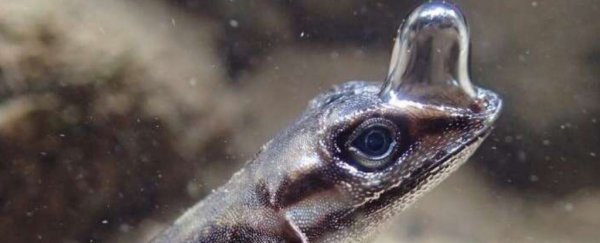Human ingenuity is no match for evolution. An exceptional new video shows a tiny tropical lizard breathing underwater from a sort of "scuba tank" on its head.
Found in Costa Rica, this intrepid little diver, known as a water anole (Anolis aquaticus), is possibly using its bubble tank to hide from predators and hunt for new sources of food, sometimes staying beneath the surface for up to 16 minutes!
"Finding evidence suggesting that water anoles 'breathe' under water was serendipitous, and not part of my original research plan," says behavioural ecologist Lindsey Swierk from Binghamton University. She captured the fascinating video footage.
"I was impressed and pretty confused about the length of the dive, which gave me an itch to take a closer look with an underwater camera in the next couple of years. That's when I saw that the anoles appeared to be rebreathing a bubble of air that covered their heads."
 (Lindsey Swierk)
(Lindsey Swierk)
Swierk has spent the past few years trying to find evidence to support her hunch, and at last, her patience has paid off.
In the video below, the creature can be seen "breathing" in and out of this bubble, probably to extract oxygen when needed.

Apart from the scuba tank on its head, Swierk also thinks this lizard might have some additional air pockets hiding in its head and throat. She thinks these would essentially serve as back ups, re-filling the current air bubble with 'new' air when needed.
"It's additionally possible that the air bubble plays a role in allowing an anole to get rid of carbon dioxide," explains Swierk.
"I suspect that there might be morphological adaptations, namely the shape of the top of the anole's head, which allows a large bubble of air to cling to it easily."
For now, all of this is hypothetical. Sure, it certainly appears as though this lizard is breathing through a bubble on its head - and that would certainly explain its underwater habits - but exactly why it developed this apparatus and how the underlying physiology works is still a mystery.
"If future investigation reveals that this rebreathing behaviour is adaptive, then I would imagine that it is a trait that evolved over time to allow water anoles, and perhaps similar anole species, to thrive in their aquatic habitats," says Swierk.
This observation is set to be published in a March edition of the Herpetological Review.
